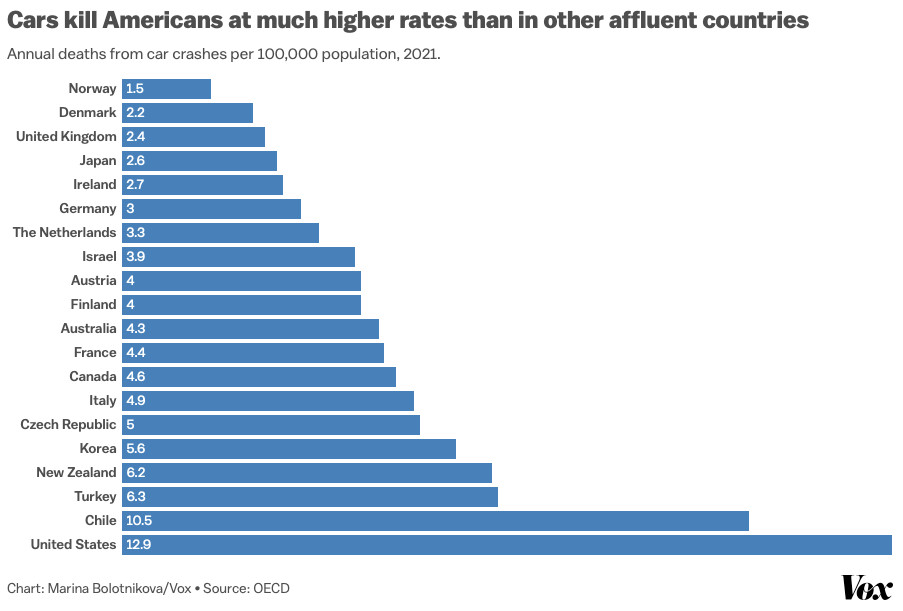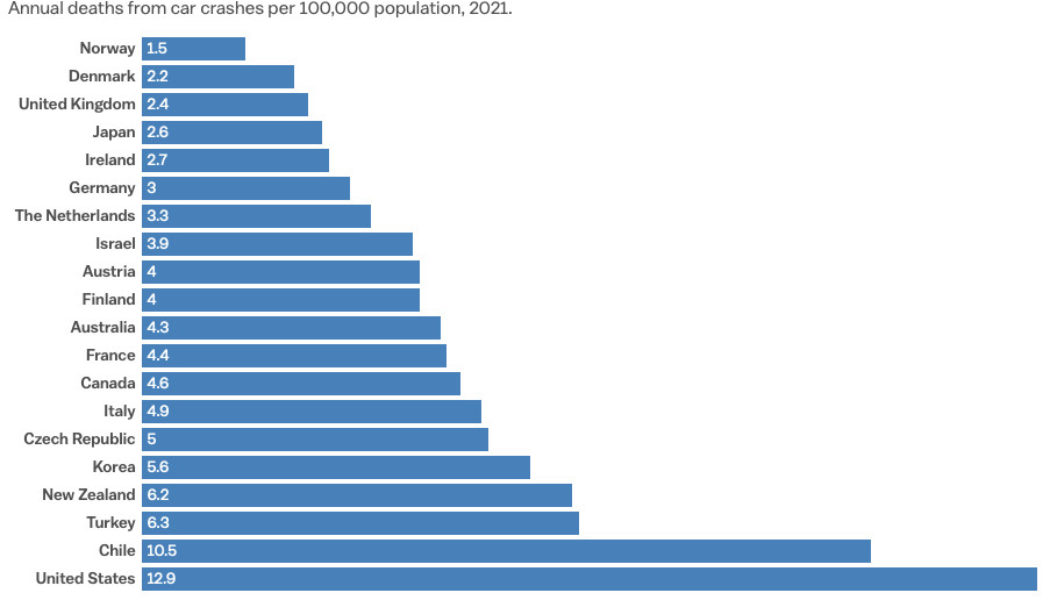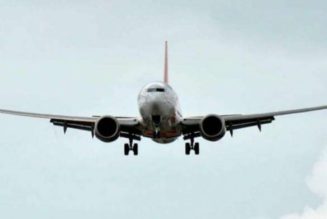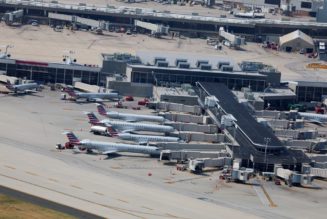In the last decade, two passengers have been killed in accidents on US commercial airlines. Over the same period, more than 365,000 Americans have been killed by cars.
Yet it was the safety of the US air travel system that was the subject of a damning, genuinely terrifying New York Times investigation last weekend — detailing lapses in the oversight of flights that are leading to near-crashes multiple times a week. The pattern led one air traffic controller to declare: “It is only a matter of time before something catastrophic happens.”
That statement captures something essential about the way that US air travel is regulated: society expects absolute safety in plane travel, catastrophes are never meant to happen, and any loss of human life is considered unacceptable. A vast federal bureaucracy exists to make sure no one dies in a plane crash. So, what would happen if we treated cars like we do planes?
Cars kill Americans at insanely high rates and it’s not getting better
Aviation authorities call American air travel the safest in the world, the Times reported. But the safety record of our car-dependent ground transportation system is one of the worst among wealthy nations. Cars killed 43,000 Americans in 2021, a number that has, almost unbelievably, increased by nearly a third in the last decade while our peer countries have decreased their car fatalities.
In the EU, car fatalities, already far lower than America’s, were down by 22 percent over the last decade. Car crashes are just behind guns as the second greatest killer of US children. Black, Hispanic, and Indigenous Americans are disproportionately likely to be killed by a car. Merely taking a walk outside is becoming particularly dangerous: about 7,508 pedestrians were killed by cars last year, the highest number since 1981 and a massive increase over the last decade, Vox’s Marin Cogan reported last month.

The US appears, in other words, to be erasing decades of progress on reducing fatalities from one of our leading causes of death, but you wouldn’t know it from the reactions of regulators and politicians. There is no big national conversation about why 40,000-plus people are killed by cars every year, or why Americans are forced to live with a risk of car crash death roughly three times higher than Canadians and Australians, five times higher than Brits and Germans, and nine times higher than Norwegians. It’s also worth pointing out that globally, car crashes are a major cause of death, killing more people than homicides and suicides combined, and death rates remain far worse in low-income countries than they are in the US.
At this point, some people might find reasons to explain away America’s rate of road carnage, or argue that it’s unfair to compare car safety and plane safety. Many more Americans ride in cars in any given year than fly. Flights put passengers in a position of unusual vulnerability, where they’re at the mercy of highly trained, uniformed professionals — so public trust is essential for the system to work — whereas anyone could drive a car. Maybe it’s just harder to control the behavior of 200 million-plus individuals who have to drive a car just to get by in America than it is to maintain a cadre of credentialed pilots and air traffic controllers.
There are solutions, if we want them
These aren’t good excuses for our failure to prevent mass death. In reality, there’s a lot we can learn from the aviation system’s approach to passenger safety.
The most obvious is that we shouldn’t accept carnage just because the activity seems inherently dangerous. If we can figure out how to make it exceptionally safe to hurtle through the sky at over 500 miles per hour, we can definitely figure out how to keep people alive on the ground, especially because other countries have done it already. The Netherlands is a famous example, but others, including Canada, with an urban geography much more similar to ours, have steadily decreased their death rates to levels far lower than ours.
A second lesson from the aviation sector is that safety is a systemic responsibility. “The [air] safety regime, with its built-in redundancies, is known in aviation circles as the Swiss cheese model: If a problem slips through a hole in one layer, it will be caught by another,” the New York Times explained, which has added up to a near-spotless safety record.
Compare that to the situation in car safety, where high death rates are accepted as a baseline part of how the system works rather than an institutional failure. Media coverage treats surges in crash deaths as if they are uncontrollable fluctuations in the weather and blames people driving recklessly for getting themselves killed. In the American traffic engineering bureaucracy, there’s a widely circulated myth that the vast majority of crashes are caused by “human error,” transportation writer David Zipper explained in the Atlantic in 2021.
Of course, individuals making unsafe choices — speeding, say, or driving drunk — matters. But these are distractions from what makes the American system of driving so unsafe in the first place: we have a proliferation of fundamentally unsafe roads, known among traffic safety advocates as “stroads,” that combine wide lanes and speeds higher than 25 miles per hour with frequent turns, stops at traffic lights, and shared traffic with cars, pedestrians, and bikes. With all these conflict points, it’s inevitable that collisions will happen.
The bottom line is that it simply doesn’t work to expect individuals to keep themselves safe in an environment built to kill them. “A robust safety system can’t depend on people always being at their best,” as journalist James Fallows recently wrote on how air travel became so safe.
A third lesson from aviation is that dangerous technology has to be adequately regulated. Empirical research increasingly shows that the rapid takeover of big cars — SUVs and pickup trucks — is a major factor behind our car safety backslide over the last decade. But US Transportation Secretary Pete Buttigieg has declined to call for policies to discourage the proliferation of these vehicles (like Washington, DC’s tax on oversized cars).
Buttigieg has, to his credit, acknowledged traffic deaths are at unacceptable levels and pointed to road design as a key factor. That’s no doubt thanks to the influence of Vision Zero, a movement that has greatly changed the conversation about why people are killed by cars.
Commentators have observed an American “learned helplessness” toward gun violence — you might say the same thing of traffic violence. There barely even seems to be a sense that we can do better, that our political leaders owe us better. A humane system would make it very hard and very rare for someone to die on the road; it would put responsibility on those who design our built environment to prevent mass death.
A version of this piece originally appeared in the Future Perfect newsletter. Sign up here!









